September 25, 2017
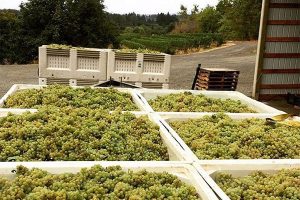
First grapes to the crushpad, September 17th, Stoller Chardonnay
Harvest began this week, similar to the old days of cool climate harvests in the Willamette Valley—only difference being the intensely hot summer preceding it. The heat gave full ripeness to the fruit, despite a large crop load and a plodding start to the growing season. I love making East Coast friends drool when I tell them our August average high temperature is 82F with low humidity. This year our August highs averaged 89F—a big time difference.
The crop load is large this year, averaging 3.56 tons per acre in projections after dropping fruit to ensure proper ripening and balance. With part of the additional yields, we will produce some more Rosé as we jump production to 1,500 cases.
Rains are in the forecast, but that’s old-school Willamette Valley winemaking, not to be feared. White-haired experience gives us patience. We don’t flinch and pick just because weather services predict rain of some indeterminate amount. We have the benefit of knowing deep-rooted, mature vines are virtually immune to rain effects.
We currently have soft, rich, deep, flavorful, plentiful, bright and clean fruit. Good characters to see, with one-quarter of our fruit now picked!
Regards,
Harry
_____________________________________________________________________________________________________________
Weather and Its Implications
The warmest vintages we’ve ever seen in the Willamette Valley over our more than 50 years of grapegrowing are the last five. Period.
We live in a bona fide cool climate here in the Willamette Valley. It’s why our wines have a great acid backbone that gives the wines a brightness of fruit and makes them perfect for aging and ideal with food. UC-Davis’ Winkler classified warmth and coolness by accumulating the recorded heat by growing season for the world’s wine regions. The Willamette Valley is designated Region One, the coolest, in company with Germany, Champagne and Burgundy.
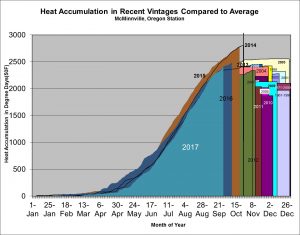
But, we are warming and the progression has been steady, with 1961-1990 heat summations of 1970 annual degree-days increasing to an average 2208 in the 1997-2012 period, and further to 2651 degree-days 2013-2017—or an increase in growing season heat of 35% over the life of our industry. Cool Region One ends at 2500 degree-days, meaning we’re now firmly in Region Two based on the last five years.
Harvest 2017 is happening now, when it traditionally has occurred, beginning the last week or so of September and lasting until the first few days of November. Timing is reassuring since last year’s harvest began in August—freakily early. At first, 2017 looked like an extreme opposite to 2016, with very late budbreak and bloom, following a wet rainy season where 150% of average rainfall filled soils.
However, abnormally warm and dry months then took 2017 from being only 10th warmest of 21 most recent vintages on June 1, to now being 4th warmest, accumulating the 3rd highest heat historically in the June to mid-August timeframe and THE highest heat mid-August to mid-September. Very high temperatures this year were the norm, with no other year showing more days over-90F days and only 2015 having more days above-80F.
Our typical pre-harvest inch of rain, which serves to equilibrate fruit chemistries, brought 1.7 inches of rain in mid-September. The rain coincided with cooling weather, seeing 67F average highs over the last 10 days, compared to the prior two weeks’ 87F. These conditions are a welcome sign for preserving acids.
Implications | Large crop load, pristine fruit quality, fully mature flavors and phenological parameters, softer acids urging earlier harvest despite pH and sugars saying “don’t pick yet.”
Vintage CDD and Weather Tables and Graph.092917
Vintage CDD Graph.092917 (graph above)
Harvest-to-Date thru Sept. 28:
Total: 140 tons
(41% of forecast)
Pinot noir: 69 tons
(41% of forecast)
Chardonnay: 33 tons
(43% of forecast)
Pinot Gris: 37 tons
(65% of forecast)
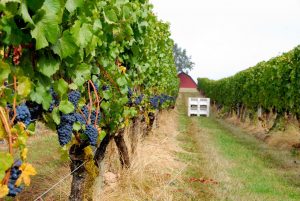
First Harvest Day at Ridgecrest Vineyards, September 30, 5-Acre block.
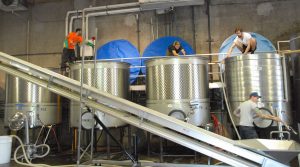
Wynne and interns (Giuseppe, Alec, and Michael, L-R) working caps on pre-and-early PN ferments.
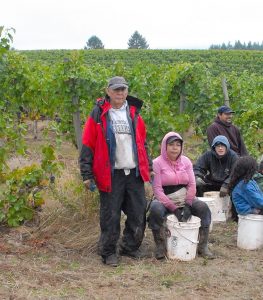
Three generations of the Ordaz family taking a break from picking at Ridgecrest.
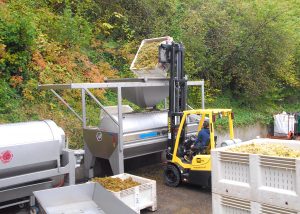
Katie rotating Stoller Chardonnay into the white press.
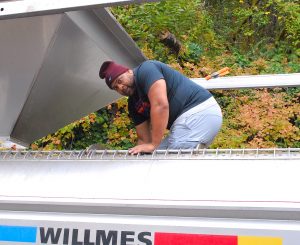
Intern Sam up-to-here adjusting fruit inside the white press.
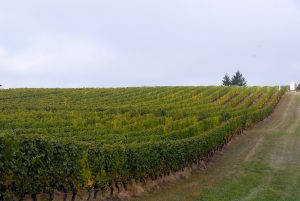
Ridgecrest’s “Babies” Pinot Noir block, one day before harvest.
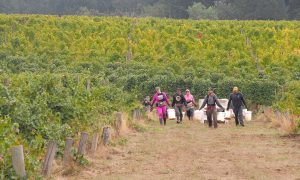
The phalanx of family pickers changing blocks at Ridgecrest Vineyards, September 30.
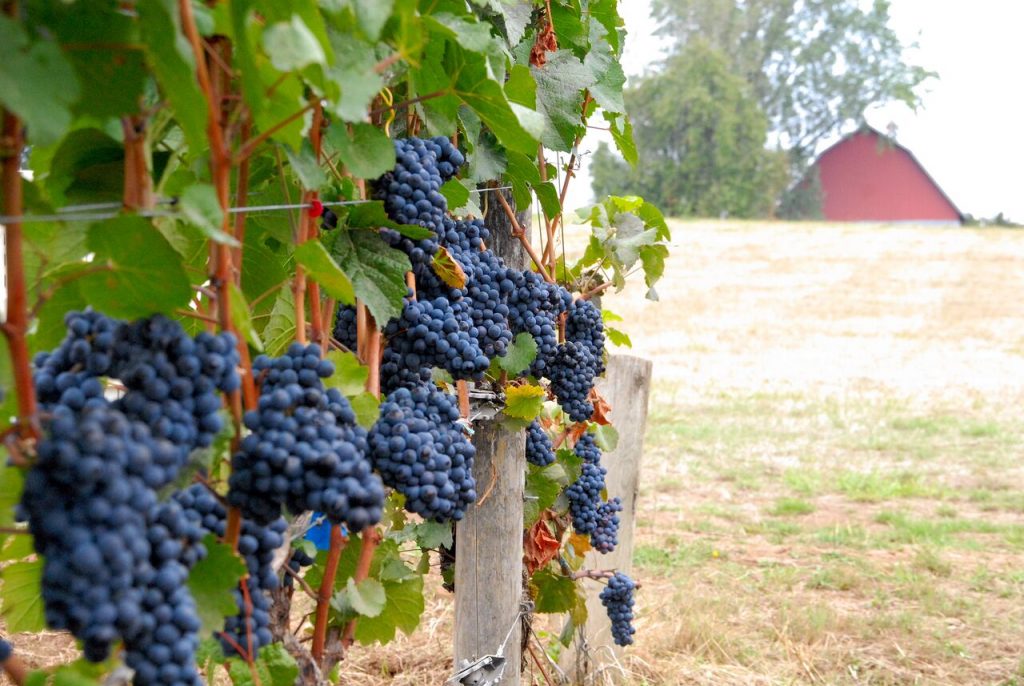
0 Comments
Leave A Comment